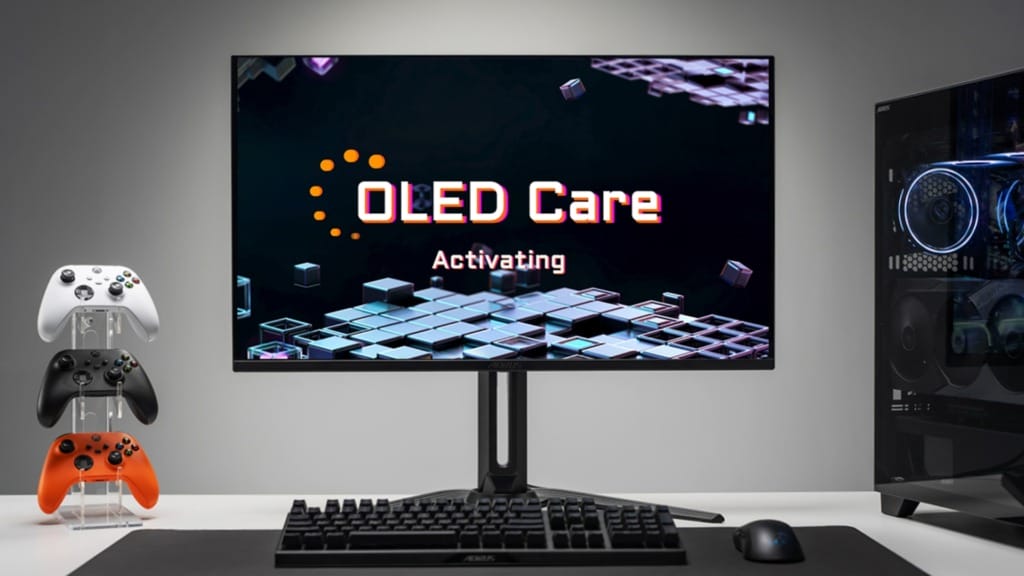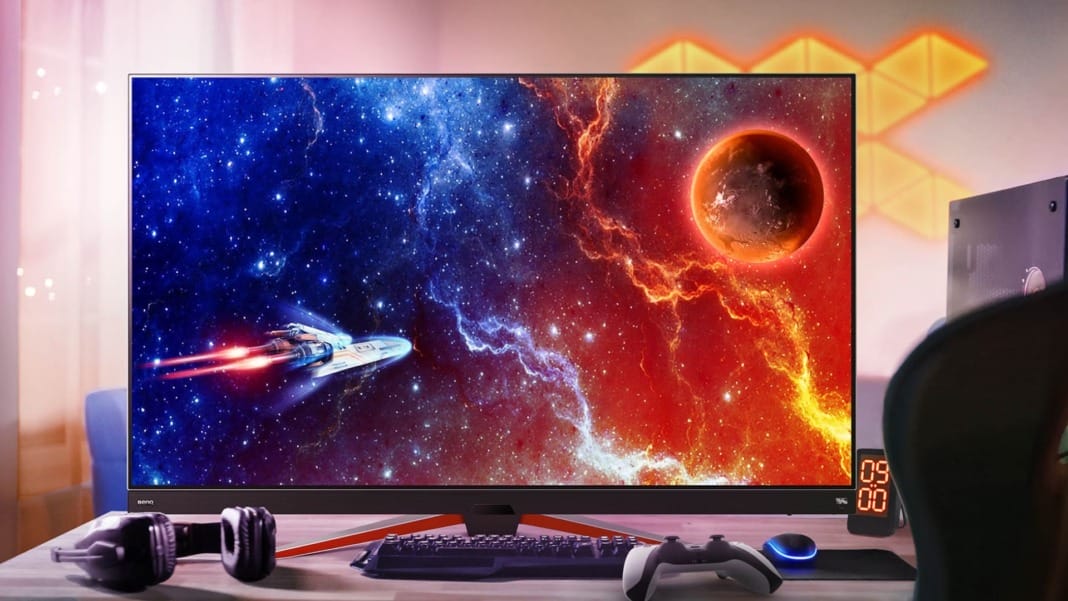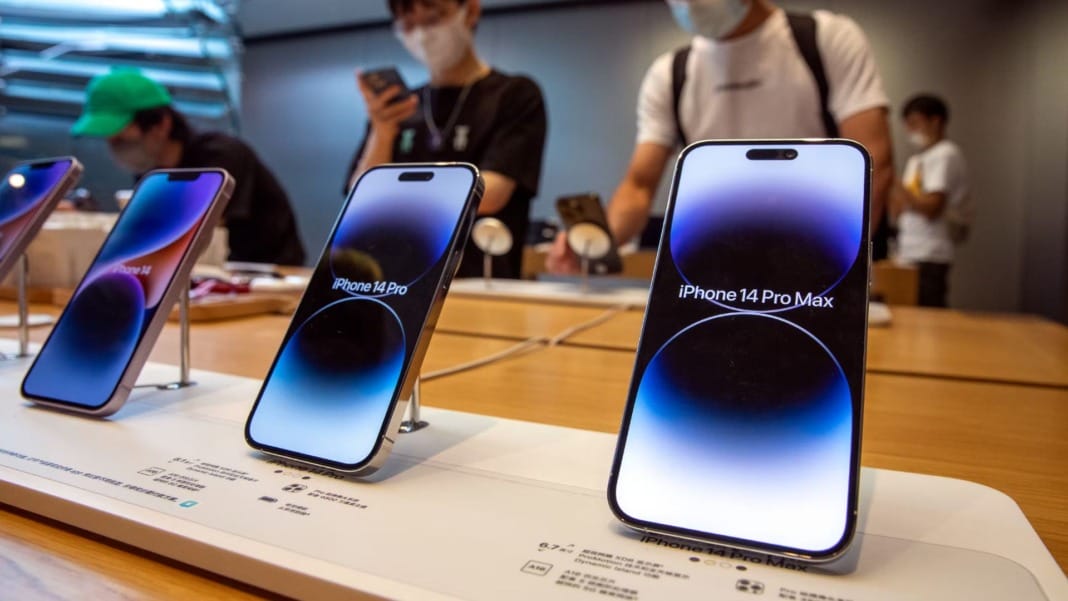OLED gaming monitors have become a hot topic in the gaming world, promising unparalleled image quality, deep blacks, and lightning-fast response times. As gaming technology advances, display quality has become just as crucial as performance, making OLED an attractive option for those seeking the best visual experience. However, with their premium price tags and concerns about long-term durability, many gamers are left wondering whether an OLED monitor is truly worth the investment.
The excitement surrounding OLED technology is not without reason. Unlike traditional LCDs, OLED displays offer self-emissive pixels, meaning each pixel lights up independently without the need for a backlight. This results in perfect blacks, infinite contrast ratios, and outstanding colour accuracy. These features and fast pixel response times make OLED monitors highly appealing for gamers who value sharp, vibrant visuals with minimal motion blur.
However, despite their advantages, OLED gaming monitors are not perfect. Issues such as burn-in, automatic brightness limitations, and high costs have made some gamers hesitant to switch. While they excel in immersive single-player experiences, some may find high-end LCD monitors a more practical choice, especially for competitive gaming or general use. To help you make an informed decision, we’ll explore the pros and cons of OLED gaming monitors in five key areas: how OLED technology works, advantages for gamers, potential drawbacks, comparisons with LCDs, and whether an OLED monitor is the right choice for you.
How does OLED technology work?
To understand why OLED monitors have gained so much attention, it’s important to look at what sets them apart from traditional LCD displays. OLED, or Organic Light Emitting Diode, is a display technology where each pixel emits its own light. This eliminates the need for a backlight, unlike LCD monitors, which rely on a uniform light source behind the screen. Because OLED pixels can turn off completely, they achieve true blacks, making dark scenes appear significantly richer and more realistic. This is a significant advantage over LCD panels, where backlight bleed can make blacks appear greyish.
The absence of a backlight also allows OLED panels to be much thinner and lighter than LCDs. This results in sleek, aesthetically appealing monitor designs and practical for various gaming setups.
Some OLED displays even come with curved or ultra-thin designs, offering a more immersive experience. Additionally, because OLED screens can individually control each pixel, they can achieve superior local dimming, meaning bright objects can appear right next to deep shadows without noticeable halo effects.

Another strength of OLED technology is its ability to deliver extremely fast response times. Unlike LCDs, which require liquid crystals to shift to control light, OLED pixels switch on and off almost instantly. This minimises motion blur and ghosting, making it an excellent choice for fast-paced games such as first-person shooters and racing titles. With OLED, every frame is rendered with incredible sharpness, allowing gamers to react more quickly to in-game movements.
Despite these advantages, OLED technology also has some drawbacks. The organic materials used in OLED panels degrade over time, particularly the blue subpixels, which can cause colour shifts or reduced brightness. Additionally, manufacturing OLED displays is expensive and complex, which is why they often come with higher price tags. While newer models have improved longevity, concerns about long-term durability remain critical for those considering an OLED gaming monitor.
Advantages of OLED gaming monitors
The most apparent advantage of OLED gaming monitors is their exceptional image quality. OLED displays deliver an unmatched contrast ratio thanks to their ability to turn pixels on and off individually. Blacks are truly black, not washed out or greyish, making games with dark environments or high dynamic range (HDR) content look stunning. Colours appear richer and more accurate, enhancing the overall gaming experience, particularly for visually immersive titles like RPGs and adventure games.
Another major benefit is the ultra-fast response time. Traditional LCD monitors, even those with high refresh rates, can suffer from motion blur due to slower pixel transitions. On the other hand, OLED monitors can switch pixels almost instantaneously—often under 1 millisecond—resulting in incredibly smooth visuals. This significantly improves fast-paced gameplay, where every frame counts, such as in competitive shooters, fighting games, and racing simulations.
OLED monitors also offer superior viewing angles compared to LCDs. With traditional LCD panels, colours and brightness can shift when viewed from the side, which can be a problem if you’re not always positioned directly in front of the screen. OLED displays maintain consistent image quality from almost any angle, making them ideal for shared gaming experiences, couch co-op setups, or even just casual viewing from different parts of the room.
Additionally, OLED screens typically emit less blue light than traditional LCDs, which can help reduce eye strain during extended gaming sessions. Many OLED gaming monitors also feature advanced HDR capabilities, offering a wider brightness range and richer colours for a more dynamic and lifelike image. OLED monitors deliver an unmatched sense of depth when playing in darker rooms, making game worlds feel more realistic and engaging.
Potential drawbacks of OLED monitors

Despite their impressive strengths, OLED gaming monitors are not without their disadvantages. Burn-in is one of the biggest concerns, which occurs when static images, such as HUD elements, health bars, or UI elements, remain on-screen for long periods and leave a faint permanent mark. While manufacturers have developed ways to reduce burn-in, such as pixel shifting and screen savers, the risk is still higher than with LCDs, making OLED less ideal for tasks that involve prolonged static images.
Another issue is Automatic Brightness Limiting (ABL), a feature designed to manage power consumption and heat by dimming bright scenes. This can be particularly noticeable in games with large, bright areas, like open-world environments with bright skies. Some gamers may find this distracting, as sudden shifts in brightness can affect the overall visual experience. While it helps preserve panel lifespan, it can be an inconvenience for those who prefer consistently bright displays.
Brightness is another potential drawback. While OLEDs perform exceptionally well in dark rooms, they are generally not as bright as high-end LCD monitors, especially those with Mini-LED backlighting. If you play games in a well-lit environment, OLED screens may appear dimmer than expected, affecting overall visibility. While HDR content looks excellent on OLEDs, LCDs with higher peak brightness can sometimes provide a more impactful HDR experience in brightly lit rooms.
Finally, price remains a significant factor. OLED gaming monitors are considerably more expensive than traditional LCDs, often costing twice as much for a similar screen size. While the image quality and performance benefits are undeniable, not all gamers will find the extra cost justifiable, especially when high-end LCD alternatives offer excellent gaming performance at a lower price point.
Should you buy an OLED gaming monitor?
Deciding whether an OLED gaming monitor is worth it depends on your gaming habits and priorities. An OLED monitor is a fantastic choice if you’re looking for the best possible image quality, deep blacks, vibrant colours, and ultra-fast response times. For single-player experiences, cinematic games, and immersive storytelling, OLED’s superior contrast and colour accuracy can make a significant difference.
However, if you play a lot of competitive games, an OLED monitor might not be the best choice. While response times are fast, many high-end LCD monitors offer higher refresh rates (such as 240Hz or more), which can be more beneficial in fast-paced esports titles. Additionally, a premium LCD monitor might be a safer long-term investment if you’re concerned about burn-in due to prolonged static images.
Your environment also plays a role. If you game in a darker room, OLED’s perfect blacks will shine, but if you often play in bright settings, the lower peak brightness could be a drawback. The cost is another primary consideration—while OLED delivers the best visuals available, not all gamers will find the premium price worth it, especially when excellent LCD options exist at lower price points.
Ultimately, OLED gaming monitors offer an unparalleled visual experience, but they are not for everyone. If you prioritise stunning visuals and can manage the potential downsides, an OLED monitor is well worth considering. However, if longevity, price, and brightness are bigger concerns for you, a high-end LCD might be the smarter choice. Understanding your gaming needs will help you make the best decision for your setup.





